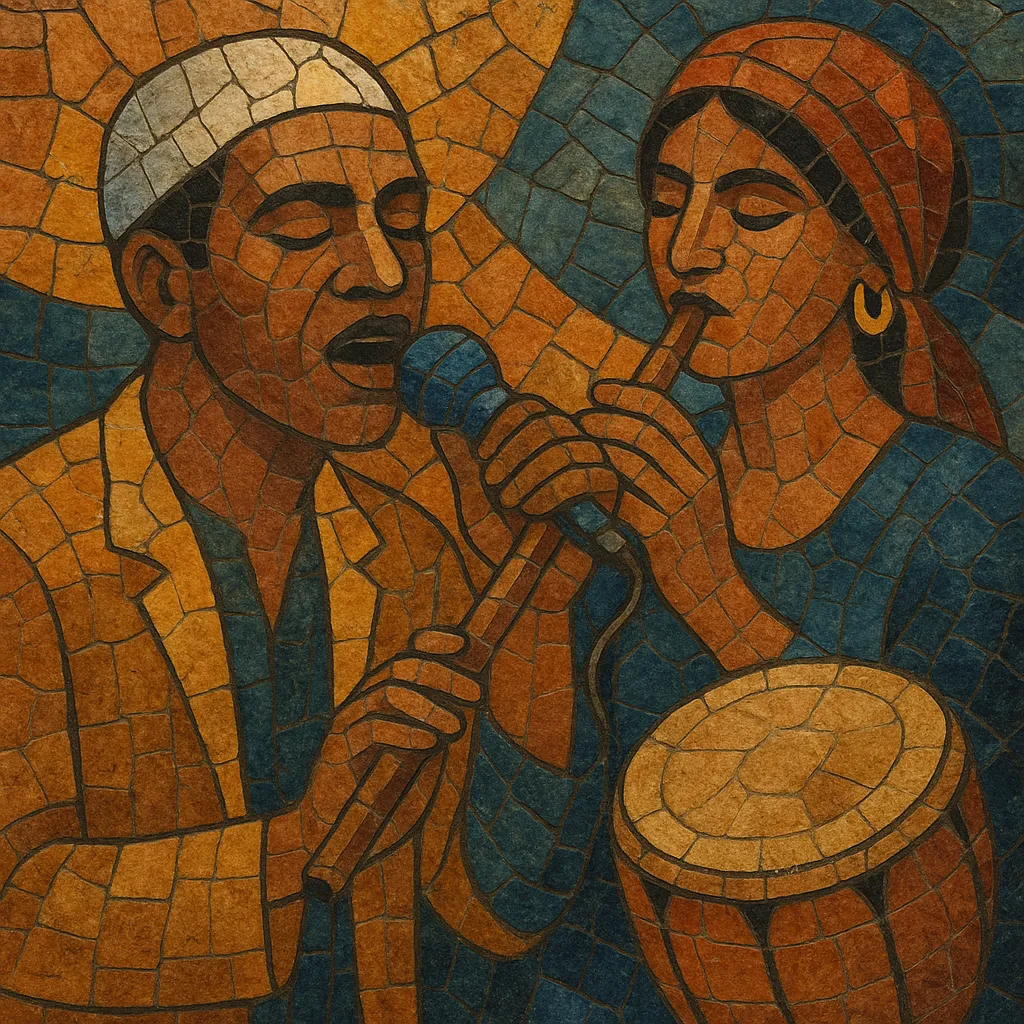Raï is a popular music genre from the port city of Oran (Wahran), Algeria, whose name comes from the colloquial Arabic word for "opinion" or "point of view." It began as a raw, vernacular form of urban song led by cheikhas (female singer-performers) accompanied by gasba flute and guellal drum, addressing everyday life, love, alcohol, social hypocrisy, and desire with unusual frankness.
Across the 1970s and 1980s, raï electrified: acoustic ensembles and Bedoui/chaabi-rooted melodies merged with electric guitar, synthesizers, drum machines, and global dance grooves (funk, disco, reggae, and pop). This produced the internationally famous “pop raï” sound—at once danceable and emotionally direct—carried by stars such as Khaled, Cheb Mami, Cheb Hasni, and Cheikha Rimitti.
Today, raï remains a living tradition and a flexible pop form, equally at home with traditional gasba/guellal timbres and glossy electronic production, while its lyrics continue to alternate between hedonistic celebration and aching nostalgia for home and lost love.
Raï emerged in Oran, Algeria, a cosmopolitan port where Arab, Amazigh (Berber), Spanish, and French currents mixed. Early raï was led by cheikhas—most famously Cheikha Rimitti—who sang in dialect over gasba (end-blown reed flute) and guellal (single-headed drum). These songs, rooted in Bedoui/chaabi practice and informed by Andalusian-classical heritage, voiced personal "opinions" (raï) about love, drinking, poverty, and social constraints. By the 1930s–40s, recordings and cabaret circuits around Oran and Algiers began to spread the style.
In the 1970s, young male singers (chebs) and bands modernized raï with electric guitar, violin sections, accordion/keyboard, and later drum machines and synthesizers. Producers such as Rachid Baba Ahmed catalyzed a sleek, danceable sound that merged local modes with funk, disco, reggae backbeats, and pop hooks. By the mid-to-late 1980s, artists like Khaled, Cheb Mami, Cheb Sahraoui & Chaba Fadela, and Raïna Raï helped define "pop raï," turning local party music into a pan-Maghrebi and diaspora phenomenon.
Raï crossed into European charts (especially France) through festivals, major-label deals, and crossover production. The music also faced pressures at home—moral censure and political violence—most tragically the 1994 assassination of Cheb Hasni. The Algerian and Franco-Maghrebi diasporas became crucial hubs, sustaining creativity and audience while broadening raï’s sound and reach.
In the 2000s–present, raï interfaced with R&B, hip hop, EDM, and global pop (often branded "Raï’n’B" or electro-raï), while traditional gasba/guellal textures have persisted in parallel. Veteran icons and new voices continue to toggle between dancefloor-ready anthems and bittersweet ballads of exile, longing, and everyday resilience, cementing raï as a foundational pillar of North African popular music and a key influence on Arabic and French-language pop.


